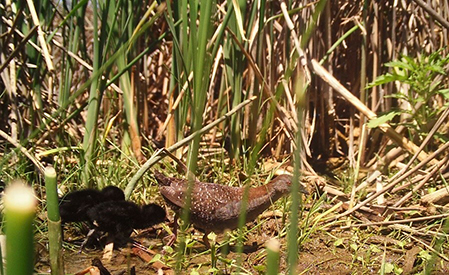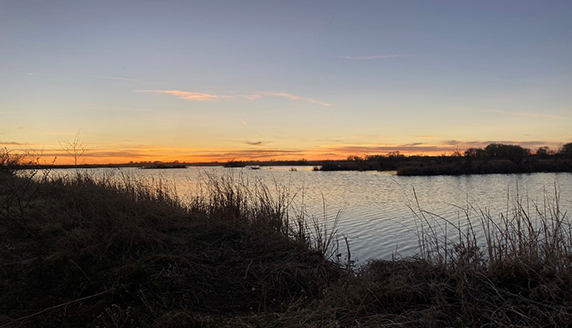The Arkansas River Valley, including John Martin Reservoir, is also home to the federally threatened Eastern Black Rails. These marsh birds are a migratory wetland species, the smallest of the rails, and populations are rapidly declining. Little is known about this species because they are very secretive and notoriously difficult to study, which makes conservation efforts very difficult.

We do know that they require wetlands with dense plant cover and extremely shallow waters. Rails use these wetlands to breed and raise their chicks, during which time adults are flightless and vulnerable to predators and extreme weather.
The wetlands throughout the Arkansas Valley and around John Martin provide important habitat for the rails, as well as other species such as waterfowl, amphibians, and fish. Wetlands are also beneficial to people because they:
- Improve water quality
- Prevent shoreline erosion
- Reduce flooding damage
- Store carbon
- Provide recreation opportunities
The most important thing we can do for rails and other wetlands species is to protect their habitat. To learn about wetlands in your area, click here to visit the National Wetlands Inventory.
